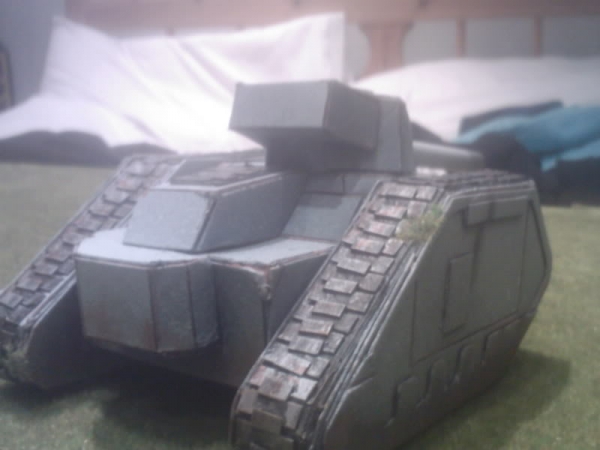
OK, I've been asked a few times about the tracks I made from bicycle chain. It's probably easier if I just make a tutorial and then I can direct anyone straight to that.
When I first thought of these tracks, I was planning on making something quite large and heavy, which required a lot of traction. We'd had a few bad winters and living off the beaten track in a rural area, the roads were never cleared of snow. My wife used to drive a BMW and anyone, who has attempted to drive a BMW through thick snow, will appreciate, the difficulty.

My idea was to create a device powerful enough and with enough traction to pull a car through snow, yet small enough to be stored in the car's boot. (or trunk, if you're American).
I intended using timing chains off car engines, these are similar to bike chain, but often constructed as a double chain. However I found timing chains expensive and would also need to purchase the sprockets. As I didn't know at the time, if my idea would work, I decided to build something on a smaller scale to test it out.
Vehicle timing chain.

I bought 2 cycle chains off a bmx style bike. This type of bike usually has a fixed gear, so there is little lateral movement in the chain, which I imagine to be an advantage. I also purchased a bucket load of m3 machine screws and nylon insert nuts. M3.5 would be a better fit, however I found this size to be hard to find, especially in the quantities I required.

A chain delinker was used to completely disassemble the chains.


Once done, the chain was reconstructed, with the m3 screws taking the place of the chain's connecting pins and doubling the chain up, side by side.

Nylon insert nuts were used, as they need to be left loose, if they are over tightened, then the chain won't articulate.
The nylon prevents the nuts rattling loose.

This process is slow and laborious, so I enlisted the assistance of 2 visiting nephews, who proved to be extremely helpful.
You will need 2 loops of doubled chain for each track.
You can soon consume an enormous amount of chain, if your track is going to have any length to it.

The next purchase I made, was cycle sprockets. I needed 4 of one size and 4 of another.
However, if you, like me, suffer from the debilitating affliction, of being unable to find a helpful cycle shop assistant, then you may find eBay the easiest place to find these.

The next stage, is to make the wheels, that connect to the sprockets.
These will also act as a spacer and deliver the drive from your gearboxes.
There are different ways to do this, the easiest probably to screw them to the wheels.

I opted to make mine on a lathe.

An option, I'm sure is not available to you all, so you may need to rely on your own wisdom, for this.
I made my wheels from nylon, as this is easy to turn on a lathe, however, if I were to make them again, I would choose aluminium.
The pictures below are the front wheels and show bearings in the centre.


The next step is to create your treads.
These will also act as braces to hold the 2 sides of your tracks together. You can take your pick of what to use for this. I used flat aluminium bar, but you could use half round, or half square bar, even 90 degree angle bar.
A lot will depend on your running surface, so think about that first. You will need to cut your treads a bit wider than your track width, then measure the gap between the 2 outer chains and drill mounting holes. I used more m3 screws and nuts to hold these in place and installed them on every other link, so they didn't foul on each other, when articulating.
The pictures below show plastic conduit as the treads.


Now I've constructed these tracks and tried them, I can affirm that they work. They work well and provide a great amount of traction, even with flat bar on a concrete surface. I imagine half round bar, or similar will be great on muddy, or snowy surfaces.
The downside, however is the tracks are enormously heavy. You will need some powerful motors, just to turn them.





